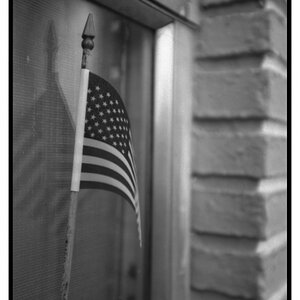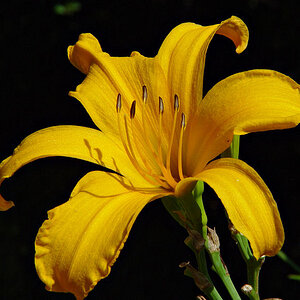Navigation
Install the app
How to install the app on iOS
Follow along with the video below to see how to install our site as a web app on your home screen.

Note: This feature currently requires accessing the site using the built-in Safari browser.
More options
You are using an out of date browser. It may not display this or other websites correctly.
You should upgrade or use an alternative browser.
You should upgrade or use an alternative browser.
Portraits in Bright areas
- Thread starter lordson
- Start date
JerryPH
No longer a newbie, moving up!
- Joined
- Oct 14, 2007
- Messages
- 6,111
- Reaction score
- 15
- Location
- Montreal, QC, Canada
- Can others edit my Photos
- Photos NOT OK to edit
my camera automatically sets the shutter speed to 1/180 if i pop the flash up and can't change it
and what is sync speed?
For you? Apparently 1/180... lol
It is the speed at which the camera and flash synchronize so that the flash affects the exposure of your picture.
What camera do you have?
skieur
TPF Noob!
- Joined
- May 14, 2007
- Messages
- 5,071
- Reaction score
- 204
- Location
- Canada
- Can others edit my Photos
- Photos OK to edit
than just close down the aperture and set the sync speed high.
If you close down the aperture too much, the flash won't carry the distance, in which case why bother. You also cannot put the sync speed past the limit 1/180. The result on a very bright day like in this shot is still overexposure, so flash is not an answer.
skieur
Digital Matt
alter ego: Analog Matt
- Joined
- Jan 30, 2004
- Messages
- 5,358
- Reaction score
- 73
- Location
- Santa Barbara, CA
- Website
- www.mattperko.com
- Can others edit my Photos
- Photos NOT OK to edit
Skieur, you don't know the exposure value at the scene, nor do you know the strength of the flash, therefore you are merely speculating, and not really giving great advice. You are arguing for the sake of arguing. The fact of the matter is, flash is used for fill on bright sunny days all the time with success. If the sync speed cannot be obtained even with the aperture completely stopped down, a ND filter can be used. As long as the flash is placed close to the subject, a decent flash will have enough power.
Alpha
Troll Extraordinaire
- Joined
- Mar 15, 2005
- Messages
- 5,451
- Reaction score
- 41
- Location
- San Francisco
- Can others edit my Photos
- Photos NOT OK to edit
We all know onboard flash commonly leads to wash-outs. While it isn't quite as pronounced in daylight as it is in low light, it will still unduly flatten the image as far as I'm concerned. An off-camera flash gives you much more control over power output, and of course provides diffusion capabilities that one wouldn't otherwise have with an onboard flash.
You don't seem to understand the lighting conditions in the photos. I would have a difficult time, even with color neg film and a spot meter, really nailing the exposure on a shot like that. It's heavily backlit and there are too many subjects for a reflector to be useful or practical. The only recourse is flash. Given the choice between on-board and off-board, the obvious answer is the one that affords you more control, which of course is off-board.
Sure but don't suggest off camera flash if it will result in over exposure due to the lighting conditions as in the posting.
You don't seem to understand the lighting conditions in the photos. I would have a difficult time, even with color neg film and a spot meter, really nailing the exposure on a shot like that. It's heavily backlit and there are too many subjects for a reflector to be useful or practical. The only recourse is flash. Given the choice between on-board and off-board, the obvious answer is the one that affords you more control, which of course is off-board.
Sideburns
TPF Noob!
- Joined
- Aug 14, 2007
- Messages
- 2,796
- Reaction score
- 0
- Location
- Windsor, Ontario
- Can others edit my Photos
- Photos OK to edit
Creepy...
...and creepier....
How bout moving them so you're not shooting into the bright sky?
HDR is really creepy if you don't do it right, and makes your people look like demons or something...so just try to move your subject, or yourself, so that you can get the proper exposure.
Helen B
TPF Noob!
- Joined
- Sep 16, 2007
- Messages
- 3,296
- Reaction score
- 467
- Location
- Hell's Kitchen, New York
- Can others edit my Photos
- Photos NOT OK to edit
This thread reminds me so much of working in Singapore, with high sun and dull hazy skies.
You didn't actually lock the exposure in the first two examples. The first was shot at ISO 200, f/4.5 and 1/500 (which shows that the conditions were not very bright). The second was shot at the same ISO and aperture, but at the sync speed of 1/180. Therefore even without flash you have increased the exposure by over a stop.
In a situation like this the first thing I would do is to look for good light - ie the best position. Reflectors are very useful because you can see the effect and you can get good diffuse fill light over a large area. To an extent, the intensity of the reflected light varies as the sunlight varies. The downside is that you may need an assistant. You can get creative about what you use for a reflector.
For simple fill-in flash an on-camera flash is usually OK. I use a piece of 1/8 CTO (orange) gel over the flash to give a slight warmth to the subjects, particularly in the shadows.
The second shot would have benefited a lot from a small reflector, but try to avoid shooting in the sun when the sun is so high. We often had to to meet deadlines, but it is to be avoided if you can.
We used to use a lot of overhead 'silks' - thin diffusing material stretched over a frame and held over the subjects. Unfortunately this usually requires a small entourage.
Keep experimenting, trying different flash settings and reflector materials, and learn to look for the best position.
Good luck,
Helen
You didn't actually lock the exposure in the first two examples. The first was shot at ISO 200, f/4.5 and 1/500 (which shows that the conditions were not very bright). The second was shot at the same ISO and aperture, but at the sync speed of 1/180. Therefore even without flash you have increased the exposure by over a stop.
In a situation like this the first thing I would do is to look for good light - ie the best position. Reflectors are very useful because you can see the effect and you can get good diffuse fill light over a large area. To an extent, the intensity of the reflected light varies as the sunlight varies. The downside is that you may need an assistant. You can get creative about what you use for a reflector.
For simple fill-in flash an on-camera flash is usually OK. I use a piece of 1/8 CTO (orange) gel over the flash to give a slight warmth to the subjects, particularly in the shadows.
The second shot would have benefited a lot from a small reflector, but try to avoid shooting in the sun when the sun is so high. We often had to to meet deadlines, but it is to be avoided if you can.
We used to use a lot of overhead 'silks' - thin diffusing material stretched over a frame and held over the subjects. Unfortunately this usually requires a small entourage.
Keep experimenting, trying different flash settings and reflector materials, and learn to look for the best position.
Good luck,
Helen
skieur
TPF Noob!
- Joined
- May 14, 2007
- Messages
- 5,071
- Reaction score
- 204
- Location
- Canada
- Can others edit my Photos
- Photos OK to edit
Creepy...
...and creepier....
How bout moving them so you're not shooting into the bright sky?
HDR is really creepy if you don't do it right, and makes your people look like demons or something...so just try to move your subject, or yourself, so that you can get the proper exposure.
Duh! This is not HDR!!!!
skieur
lordson
TPF Noob!
- Joined
- Oct 16, 2007
- Messages
- 124
- Reaction score
- 0
- Can others edit my Photos
- Photos OK to edit
hrm... these pictures were the one of the first i ever took
maybe the 10th shot i ever took, or something like that
so yeah, basically i get it, horrible lighting conditions
at least theyll be better than PnS's because i had a look at some photos using them and either the subject or teh background is always underexposed
maybe the 10th shot i ever took, or something like that
so yeah, basically i get it, horrible lighting conditions
at least theyll be better than PnS's because i had a look at some photos using them and either the subject or teh background is always underexposed
skieur
TPF Noob!
- Joined
- May 14, 2007
- Messages
- 5,071
- Reaction score
- 204
- Location
- Canada
- Can others edit my Photos
- Photos OK to edit
Skieur, you don't know the exposure value at the scene, nor do you know the strength of the flash, therefore you are merely speculating, and not really giving great advice. You are arguing for the sake of arguing. The fact of the matter is, flash is used for fill on bright sunny days all the time with success. If the sync speed cannot be obtained even with the aperture completely stopped down, a ND filter can be used. As long as the flash is placed close to the subject, a decent flash will have enough power.
I may not know the exposure value at the scene but I do know that trying to add fill flash in a sunny environment often leads to overexposure. The fact that this is what happened in the shot, indicates I am correct. I am not arguing for the sake of arguing, in fact I resent the suggestion since I very much doubt that you have almost 50 years experience in photography. As to fill in flash used successfully on bright sunny days you tend to forget that some flashes sync at 1/60 in some film cameras and the new Sony A700 at 1/250 which is a considerable difference. Sure an ND filter can be used, but there was no mention that he had one. Irrespective the flash could not be close in a 3 shot with background included as was the case here. Wide angle would cause distortion and light fall off on many flash units.
So, talk technique and cut the derogatory talk about arguing for the sake of arguing and everyone here will learn more.
skieur
JerryPH
No longer a newbie, moving up!
- Joined
- Oct 14, 2007
- Messages
- 6,111
- Reaction score
- 15
- Location
- Montreal, QC, Canada
- Can others edit my Photos
- Photos NOT OK to edit
Duh! This is not HDR!!!!
skieur
Nope, not HRD at all, that I can promise. If I had the original pic in RAW, I could create several JPGs are various exposure levels and then create a pic in HDR... but not very well from a single small JPG.
Digital Matt
alter ego: Analog Matt
- Joined
- Jan 30, 2004
- Messages
- 5,358
- Reaction score
- 73
- Location
- Santa Barbara, CA
- Website
- www.mattperko.com
- Can others edit my Photos
- Photos NOT OK to edit
The question is not about some film cameras, and not about the new Sony A700. It's about the K100D Super, which the OP owns, and his question is what can he do in future shots to take a correct portrait outdoors. With modern speedlights it is very simple to overpower daylight, even in sunny conditions, by 1-2 stops, or even more. His photos, even without being there, or viewing exif data, shows clearly that this scene is obviously well within the dynamic range that fill flash will work, even on camera fill flash, if that is all that's available, even at a relatively slow sync speed of 1/180.
There is so much misinformation on this forum, that is scares me. I think that if you can't be helpful, then you just shouldn't post a reply.
There is so much misinformation on this forum, that is scares me. I think that if you can't be helpful, then you just shouldn't post a reply.
Alpha
Troll Extraordinaire
- Joined
- Mar 15, 2005
- Messages
- 5,451
- Reaction score
- 41
- Location
- San Francisco
- Can others edit my Photos
- Photos NOT OK to edit
Nope, not HRD at all, that I can promise. If I had the original pic in RAW, I could create several JPGs are various exposure levels and then create a pic in HDR... but not very well from a single small JPG.
I'll quote myself. Once again,
"Discussions of single-image HDR come up around here every once in a while. I don't care what anyone says, by definition there is absolutely no such thing. Every photograph has a discrete exposure range that is inherently incapable of being extended via processing."
Sideburns
TPF Noob!
- Joined
- Aug 14, 2007
- Messages
- 2,796
- Reaction score
- 0
- Location
- Windsor, Ontario
- Can others edit my Photos
- Photos OK to edit
Duh! This is not HDR!!!!
skieur
I was just explaining it because the other guy said his was...
Either way, they are not proper solutions, and don't yield a usable photograph.
JerryPH
No longer a newbie, moving up!
- Joined
- Oct 14, 2007
- Messages
- 6,111
- Reaction score
- 15
- Location
- Montreal, QC, Canada
- Can others edit my Photos
- Photos NOT OK to edit
I'll quote myself. Once again,
"Discussions of single-image HDR come up around here every once in a while. I don't care what anyone says, by definition there is absolutely no such thing. Every photograph has a discrete exposure range that is inherently incapable of being extended via processing."
I semi agree... I agree in technique, principal and for best results, but...
The range of inofrmation held in a RAW is a lot more useable than in JPG, and though I am not saying it is as good as taking multiple distinct proper exposure levels, it can be done with a modicum of success using a single RAW picture that would aid some with the very pictures that this user could have used to save or improve the ones he displayed.
Similar threads
- Replies
- 5
- Views
- 1K



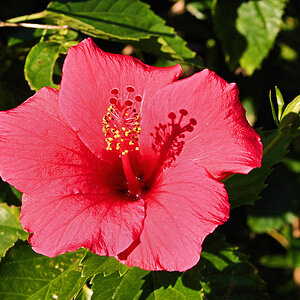

![[No title]](/data/xfmg/thumbnail/37/37124-e3a7364a555409b3504415a982f9dfe0.jpg?1619737883)
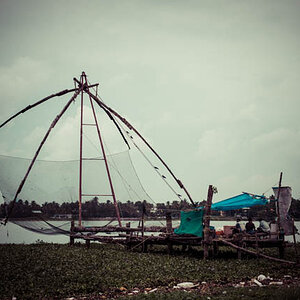
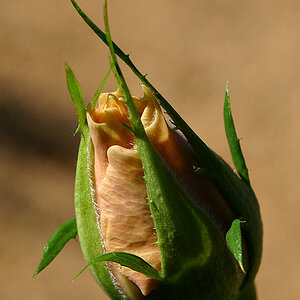
![[No title]](/data/xfmg/thumbnail/34/34054-75057fa828bda4184ea808ff8bd8dfcf.jpg?1619736254)
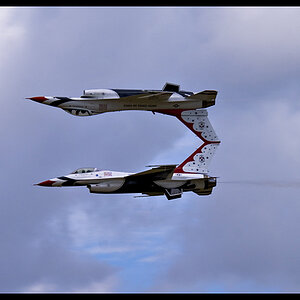
![[No title]](/data/xfmg/thumbnail/34/34053-89f2960a2f30add00b9b4379abd6dd12.jpg?1619736253)

